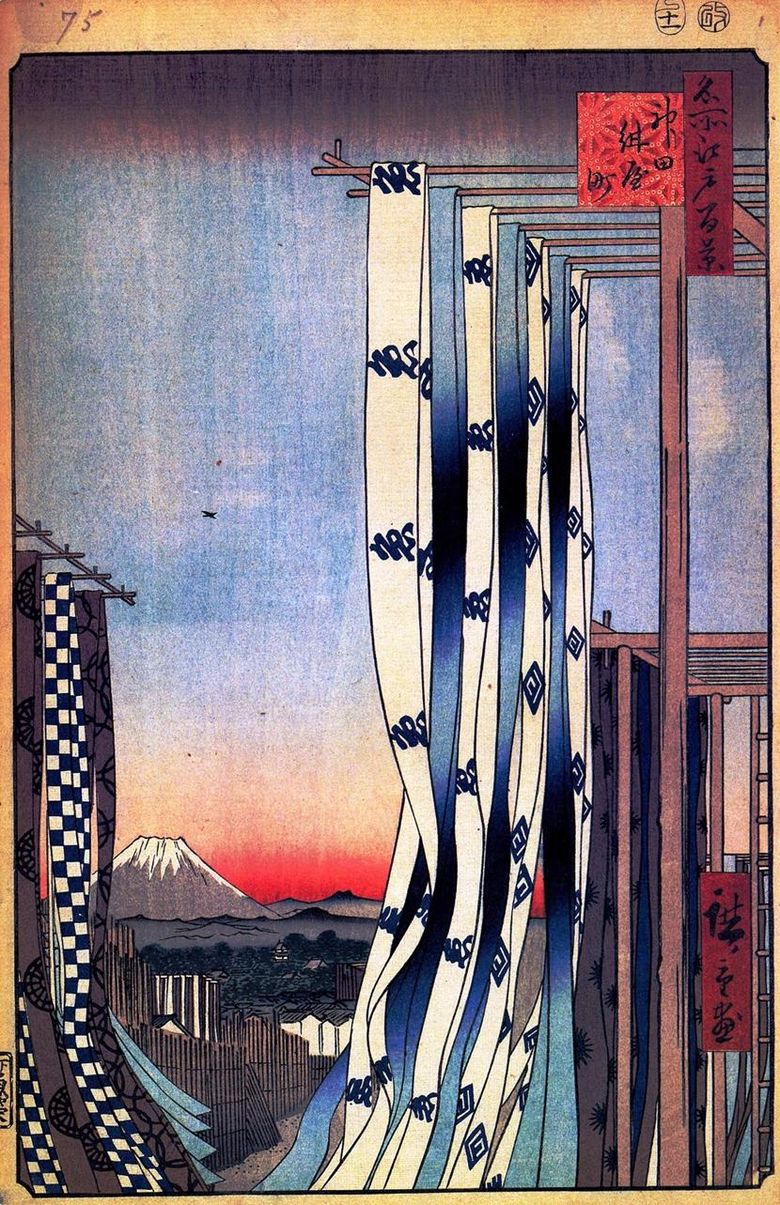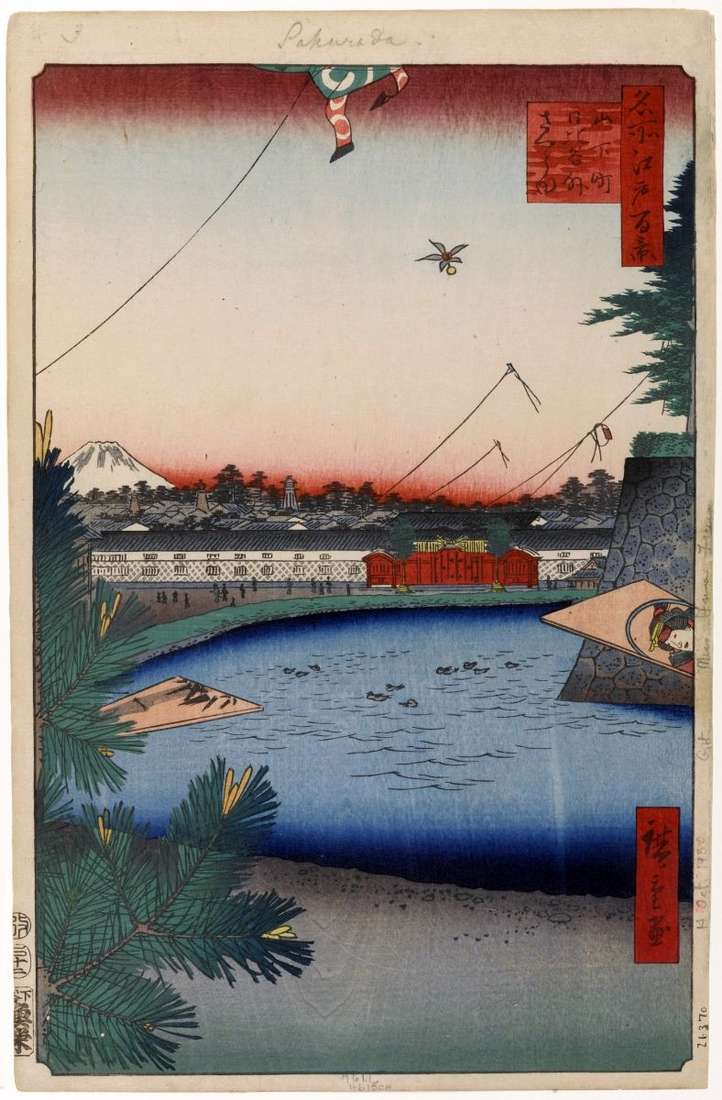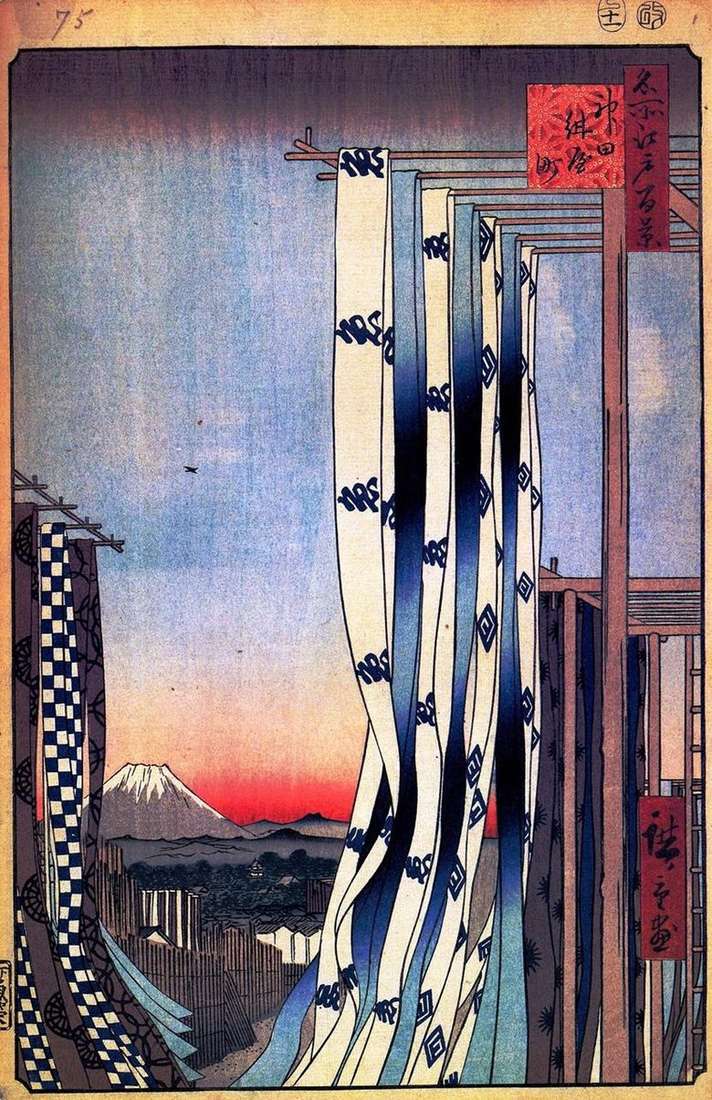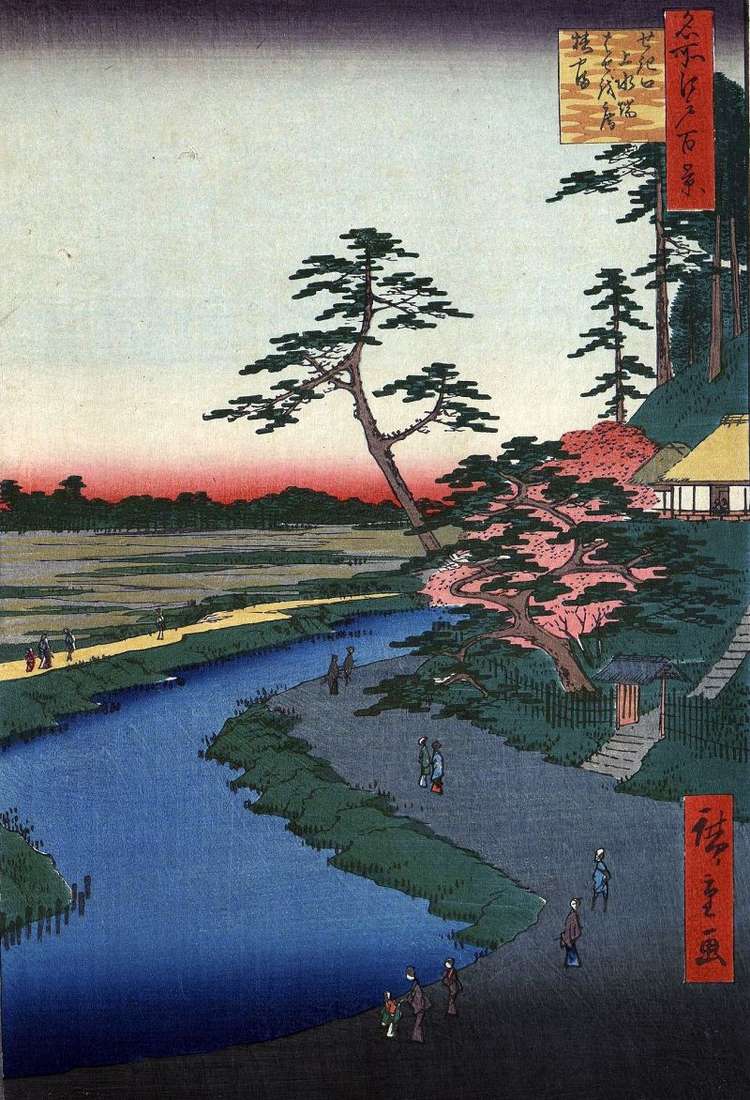
At the beginning of the Edo period, a quarter of artisans was formed in the Kanda area near the merchants’ quarter. They shared by occupation, each quarter was called the profession. In the quarter of Konyate there lived cloth dyers. In the north of the quarter, the Aidzemagawa River flowed.
Probably, the name was due to the fact that artisans washed their fabrics here. Their job was to apply a dark blue ornament to the fabric – anzo-me. After painting, the cloth was dried on the roofs. Such a spectacle was one of the symbols of Edo. In the engraving of Hiroshige, between the strips of cloth, the Konyate quarter is visible. In the distance, among the greenery – the observation tower of the castle of Edo, to the left rises Fuji. On white strips of cloth – the hieroglyph “fish” – the first in the name of the publisher of the series. On others, the print of Hiroshige is in the form of a diamond, in which two katakana symbols are connected: “chi” and “ro,” the first two syllables named Hiroshige.
The fabric cuts on the left are the fabric for the yukata. On the right are the towel strips, which were also used as headbands. In the later editions, the color of the blue bands of tissues acquires transitions from dark blue to light blue. The red band on the horizon, like the band of the bokasi at the top edge, becomes wider.
 District de Kanda, quartier Dyer – Utagawa Hiroshige
District de Kanda, quartier Dyer – Utagawa Hiroshige Fabric shops in the Odemmouth quarter by Utagawa Hiroshige
Fabric shops in the Odemmouth quarter by Utagawa Hiroshige The area of Hibiya in the Soto-Sakurada area from the Yamashita-te by Utagawa Hiroshige district
The area of Hibiya in the Soto-Sakurada area from the Yamashita-te by Utagawa Hiroshige district The race circle in Hatsune-no Baba in the Bakurote Quarter by Utagawa Hiroshige
The race circle in Hatsune-no Baba in the Bakurote Quarter by Utagawa Hiroshige Quarter of Usimati, Takanava by Utagawa Hiroshige
Quarter of Usimati, Takanava by Utagawa Hiroshige Dawn in the Esivara Quarter by Utagawa Hiroshige
Dawn in the Esivara Quarter by Utagawa Hiroshige Distrito de Kanda, barrio de Dyer – Utagawa Hiroshige
Distrito de Kanda, barrio de Dyer – Utagawa Hiroshige Hut &; “Bassein on Mount Tsubakiyama near the aqueduct in the Sekiguchi district by Utagawa Hiroshige
Hut &; “Bassein on Mount Tsubakiyama near the aqueduct in the Sekiguchi district by Utagawa Hiroshige